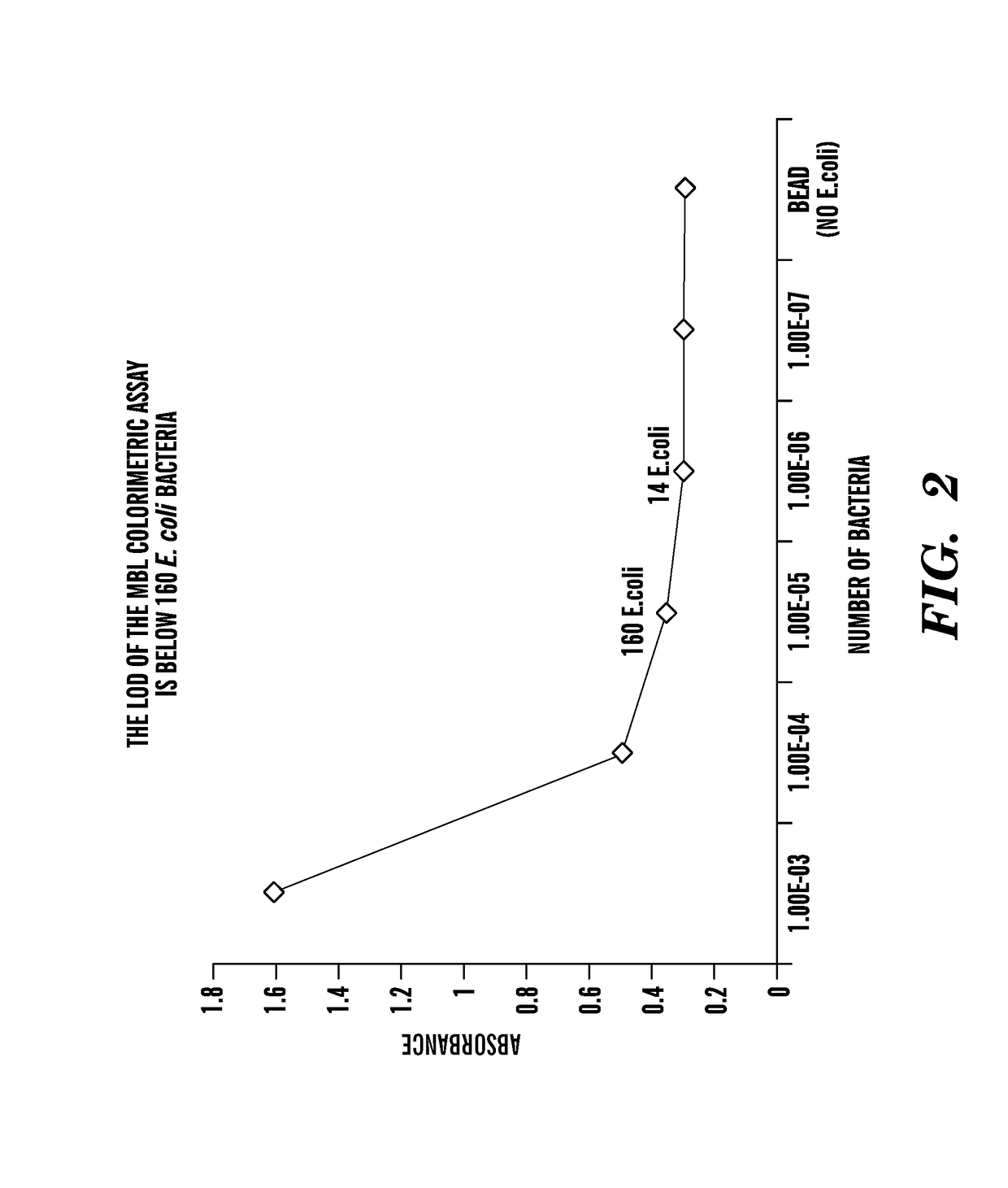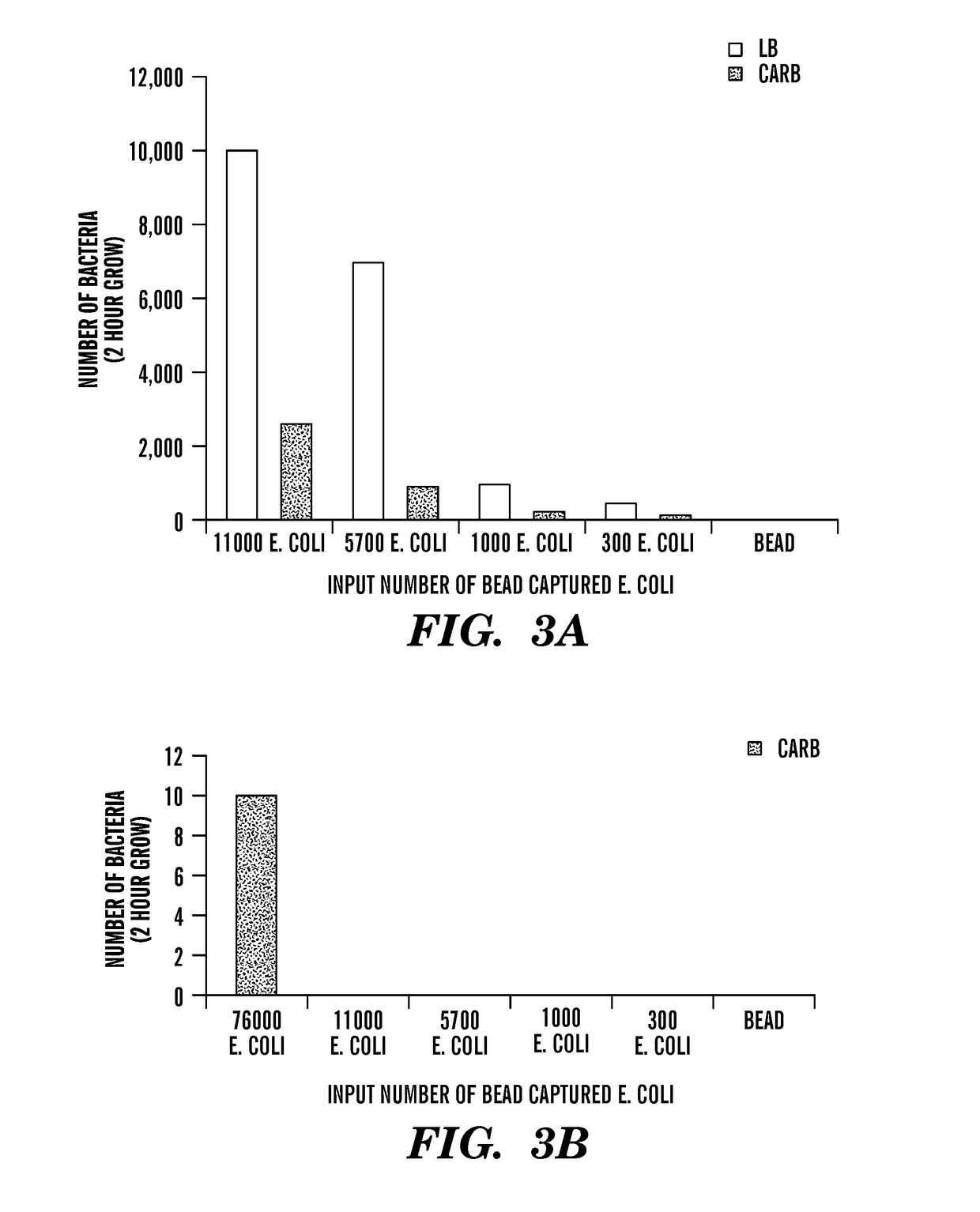Rapid antibiotic susceptibility testing
a technology of antibiotic susceptibility and rapid testing, applied in the field of rapid antibiotic susceptibility testing, can solve the problems of affecting the survival rate of patients who initially receive incorrect therapies, affecting the survival rate of patients,
- Summary
- Abstract
- Description
- Claims
- Application Information
AI Technical Summary
Benefits of technology
Problems solved by technology
Method used
Image
Examples
example 1
Rapid Antibiotic Sensitivity Testing Based on Magnetic Separation and Microscopy
[0426]Bacteremia, a condition that is also known as bacterial sepsis or blood poisoning, describes a bacterial infestation of a patient's blood and is a major killer in the US and worldwide. Worldwide, there are 18 million cases of sepsis per year, which result in over 6 million deaths, and in the US alone there are 750,000 cases a year, which result in over 200,000 deaths. When physicians suspect that a patient is suffering from bacteremia they must act quickly: since bacteria can divide very rapidly, every hour lost before the correct treatment is administered can make a crucial difference in patient outcome. Consequently, physicians must rush to answer two questions: does the patient indeed have bacteremia, and if so, what antibiotics to prescribe. Unfortunately, the present approach to answering these questions—blood culture—takes two days or more to yield an answer, which quite often proves too long...
example 2
Rapid Antibiotic Sensitivity Testing Based on Magnetic Separation and ELISA
[0442]The inventors have developed a method for rapid isolation, detection, and antibiotic susceptibility determination of bacteremia or other microbial infections using magnetic separation and ELISA / metabolic readout. This provides a technique for detecting bacteremia and determining the antibiotic resistance profile of the causative agent within a few hours or less.
[0443]Generally, the method comprises: (i) extraction and concentration of pathogens from blood using functionalized magnetic beads; (ii) splitting into subsamples and incubation with antibiotic-supplemented media (Yeast extract free media for ELISA or other for Luciferase based assay); and (iii) detection of pathogen growth using an ELISA assay (Enzyme Linked Immunosorbent Assay) or Luciferase detection of ATP production assay, for example BACTITER-GLO™ Microbial Cell Viability Assay from Promega (Cat No. G8230).
[0444]Pathogen Extraction and Con...
example 3
Plating Captured / Outgrown Bacteria can Generate Artificially Low Counts
[0462]Capture efficiency of Akt-FcMBL beads was determined by plate counts[0463]5 ul Akt-FcMBL beads+10 ul of either S. aureus or E. coli in 1 mL TBST-Ca+[0464]Hula 10 min[0465]Wash 1× in TBST-Ca+ while on magnet
[0466]Counts:[0467]Number of bacteria added (input), supernatant from beads (uncaptured), and bead fraction post wash (captured)
[0468]As seen in FIG. 8, plating of bead fractions can generate artificially low readouts of bacteria number. Thus, readouts other than plating (such as Fc-MBL ELISA, metabolic assays—ATP luminescence) can be more useful for measuring growth of bacteria isolated with the Akt-FcMBL beads.
[0469]Without wishing to be bound by a theory, the FcMBL beads are binding all the bacteria. However, these clump together and so the standard technology of plating out and counting colonies may not be viable to quantify the number of pathogens captured the results are artificially low). Therefore...
PUM
| Property | Measurement | Unit |
|---|---|---|
| total time | aaaaa | aaaaa |
| volume | aaaaa | aaaaa |
| volume | aaaaa | aaaaa |
Abstract
Description
Claims
Application Information
 Login to View More
Login to View More - R&D
- Intellectual Property
- Life Sciences
- Materials
- Tech Scout
- Unparalleled Data Quality
- Higher Quality Content
- 60% Fewer Hallucinations
Browse by: Latest US Patents, China's latest patents, Technical Efficacy Thesaurus, Application Domain, Technology Topic, Popular Technical Reports.
© 2025 PatSnap. All rights reserved.Legal|Privacy policy|Modern Slavery Act Transparency Statement|Sitemap|About US| Contact US: help@patsnap.com



